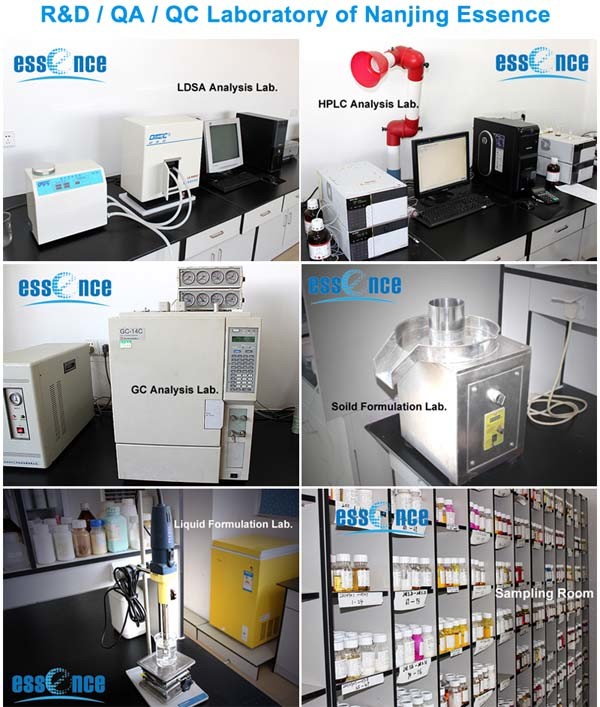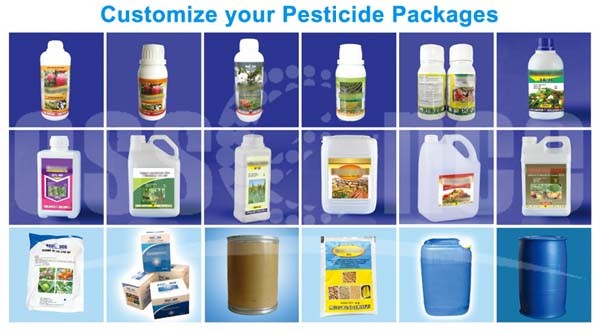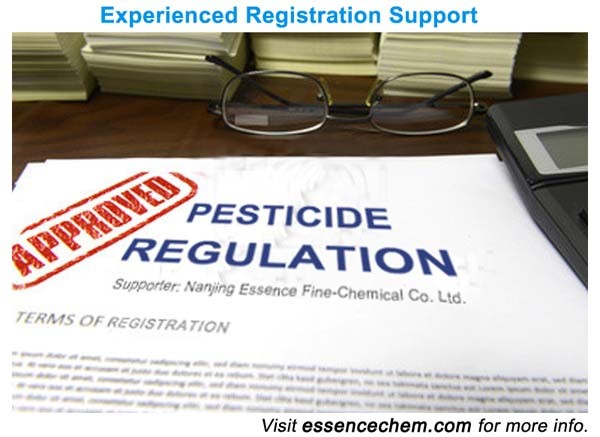Carboxin 30% + Difenoconazole 3% Fs
Model NO.: FS
CAS1: 5234-68-4
CAS2: 119446-68-3
Trademark: Essence
Transport Package: 10ml ~200L for Liquid Formulations,
Specification: FAO, WHO
Origin: China
HS Code: 3808
Model NO.: FS
CAS1: 5234-68-4
CAS2: 119446-68-3
Trademark: Essence
Transport Package: 10ml ~200L for Liquid Formulations,
Specification: FAO, WHO
Origin: China
HS Code: 3808
Carboxin 30% + Difenoconazole 3% FSCarboxin NOMENCLATURE
Common name carboxin (BSI, E-ISO, ANSI); carboxine ((f) F-ISO); carbathiin (Canada); no name (Denmark, Germany)Â
IUPACÂ name 5,6-dihydro-2-methyl-1,4-oxathi-ine-3-carboxanilide
Chemical Abstracts name 5,6-dihydro-2-methyl-N-phenyl-1,4-oxathiin-3-carboxamideÂ
CASÂ RNÂ [5234-68-4]Â
Carboxin 30% + Difenoconazole 3% Fs
Carboxin APPLICATIONS
Carboxin Biochemistry SDHI: inhibits mitochondrial function by disrupting complex II (succinate dehydrogenase) in the respiratory electron transport chain.
Carboxin Mode of action Systemic fungicide.
Carboxin Uses Seed treatment for control of smuts and bunts (particularly loose smut, Ustilago spp.), at 50-200 g/100 kg seed, on barley, wheat, and oats; seedling diseases (particularly Rhizoctonia spp.) of barley, wheat, oats, rice, cotton, peanuts, soya beans, vegetables, maize, sorghum, and other crops.
Carboxin Compatibility Not compatible with pesticides which are highly alkaline or acidic.
Difenoconazole NOMENCLATURE
Common name difénoconazole ((m) F-ISO); difenoconazole (BSI, E-ISO)Â
IUPACÂ name cis,trans-3-chloro-4-[4-methyl-2-(1H-1,2,4-triazol-1-ylmethyl)-1,3-dioxolan-2-yl]phenyl 4-chlorophenyl ether
Chemical Abstracts name 1-[2-[2-chloro-4-(4-chlorophenoxy)phenyl]-4-methyl-1,3-dioxolan-2-ylmethyl]-1H-1,2,4-triazoleÂ
CASÂ RNÂ [119446-68-3] unstated stereochemistryÂ
Difenoconazole APPLICATIONS
Difenoconazole Biochemistry Sterol demethylation inhibitor. Inhibits cell membrane ergosterol biosynthesis, stopping development of the fungus.
Difenoconazole Mode of action Systemic fungicide with preventive and curative action. Absorbed by the leaves, with acropetal and strong translaminar translocation.
Difenoconazole Uses Systemic fungicide with a novel broad-range activity protecting the yield and crop quality by foliar application or seed treatment. Provides long-lasting preventive and curative activity against Ascomycetes, Basidiomycetes and Deuteromycetes, including Alternaria, Ascochyta, Cercospora, Cercosporidium, Colletotrichum, Guignardia, Mycosphaerella, Phoma, Ramularia, Rhizoctonia, Septoria, Erysiphe and Venturia spp., Erysiphaceae, Uredinales and several seed-borne pathogens. Used against disease complexes in grapes, pome fruit, stone fruit, potatoes, sugar beet, oilseed rape, bananas, cereals, rice, soya beans, ornamentals and various vegetable crops, at 30-125 g/ha. Used as a seed treatment against a range of pathogens in wheat and barley, at 3-24 g/100 kg seed. Phytotoxicity In wheat, early foliar applications at growth stages 29-42 might cause, in certain circumstances, chlorotic spotting of leaves, but this has no effect on yield.





 Carboxin 30% + Difenoconazole 3% FS
Carboxin NOMENCLATURE
Common name carboxin (BSI, E-ISO, ANSI); carboxine ((f) F-ISO); carbathiin (Canada); no name (Denmark, Germany)Â
IUPACÂ name 5,6-dihydro-2-methyl-1,4-oxathi-ine-3-carboxanilide
Chemical Abstracts name 5,6-dihydro-2-methyl-N-phenyl-1,4-oxathiin-3-carboxamideÂ
CASÂ RNÂ [5234-68-4]Â
Carboxin 30% + Difenoconazole 3% Fs
Carboxin APPLICATIONS
Carboxin Biochemistry SDHI: inhibits mitochondrial function by disrupting complex II (succinate dehydrogenase) in the respiratory electron transport chain.
Carboxin Mode of action Systemic fungicide.
Carboxin Uses Seed treatment for control of smuts and bunts (particularly loose smut, Ustilago spp.), at 50-200 g/100 kg seed, on barley, wheat, and oats; seedling diseases (particularly Rhizoctonia spp.) of barley, wheat, oats, rice, cotton, peanuts, soya beans, vegetables, maize, sorghum, and other crops.
Carboxin Compatibility Not compatible with pesticides which are highly alkaline or acidic.
Difenoconazole NOMENCLATURE
Common name difénoconazole ((m) F-ISO); difenoconazole (BSI, E-ISO)Â
IUPACÂ name cis,trans-3-chloro-4-[4-methyl-2-(1H-1,2,4-triazol-1-ylmethyl)-1,3-dioxolan-2-yl]phenyl 4-chlorophenyl ether
Chemical Abstracts name 1-[2-[2-chloro-4-(4-chlorophenoxy)phenyl]-4-methyl-1,3-dioxolan-2-ylmethyl]-1H-1,2,4-triazoleÂ
CASÂ RNÂ [119446-68-3] unstated stereochemistryÂ
Difenoconazole APPLICATIONS
Difenoconazole Biochemistry Sterol demethylation inhibitor. Inhibits cell membrane ergosterol biosynthesis, stopping development of the fungus.
Difenoconazole Mode of action Systemic fungicide with preventive and curative action. Absorbed by the leaves, with acropetal and strong translaminar translocation.
Difenoconazole Uses Systemic fungicide with a novel broad-range activity protecting the yield and crop quality by foliar application or seed treatment. Provides long-lasting preventive and curative activity against Ascomycetes, Basidiomycetes and Deuteromycetes, including Alternaria, Ascochyta, Cercospora, Cercosporidium, Colletotrichum, Guignardia, Mycosphaerella, Phoma, Ramularia, Rhizoctonia, Septoria, Erysiphe and Venturia spp., Erysiphaceae, Uredinales and several seed-borne pathogens. Used against disease complexes in grapes, pome fruit, stone fruit, potatoes, sugar beet, oilseed rape, bananas, cereals, rice, soya beans, ornamentals and various vegetable crops, at 30-125 g/ha. Used as a seed treatment against a range of pathogens in wheat and barley, at 3-24 g/100 kg seed. Phytotoxicity In wheat, early foliar applications at growth stages 29-42 might cause, in certain circumstances, chlorotic spotting of leaves, but this has no effect on yield.





Â